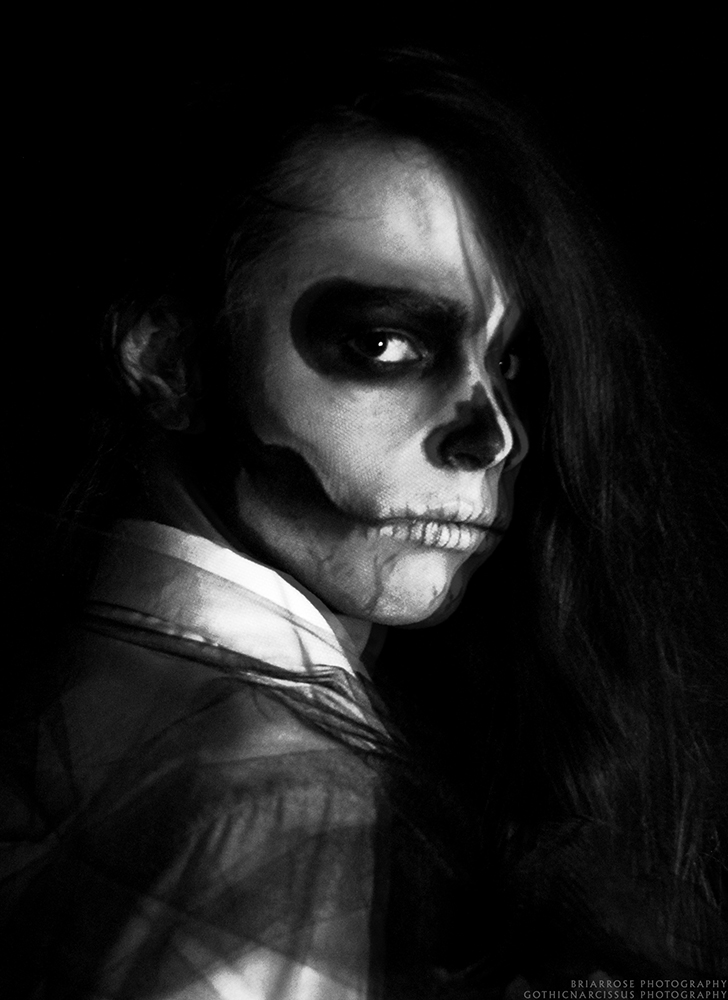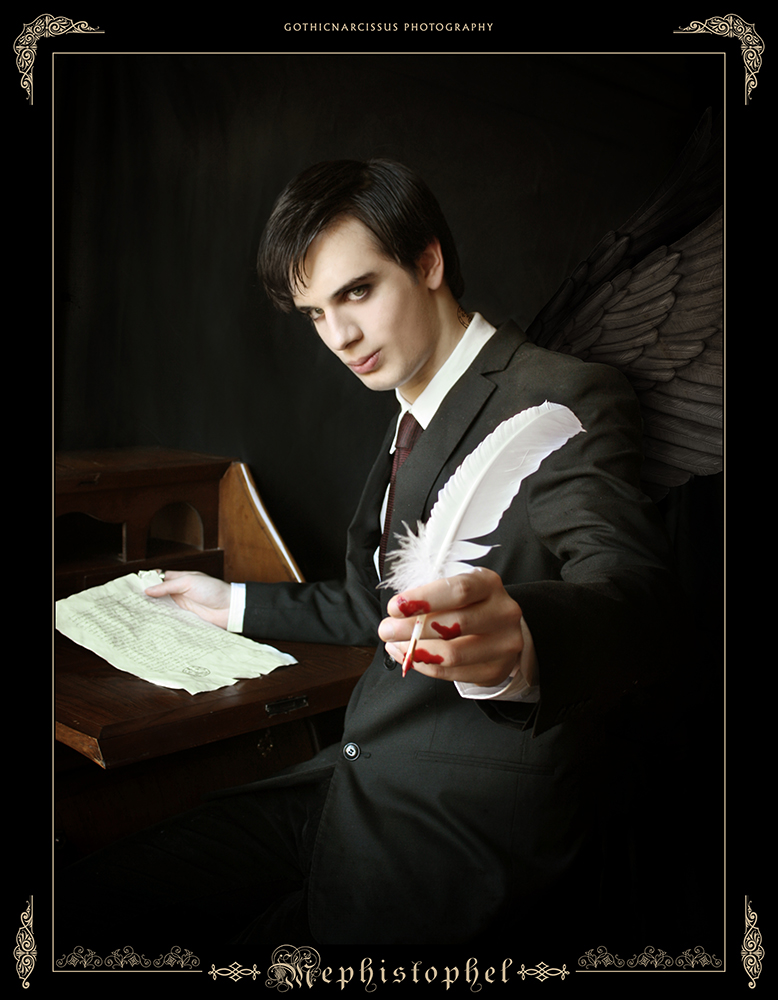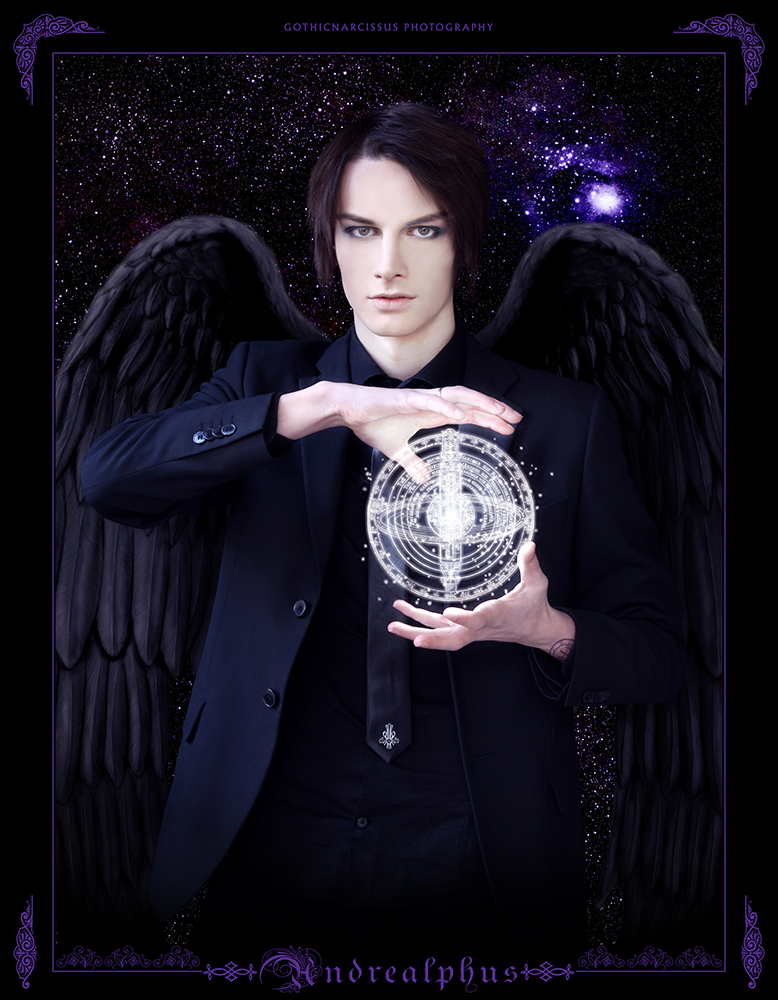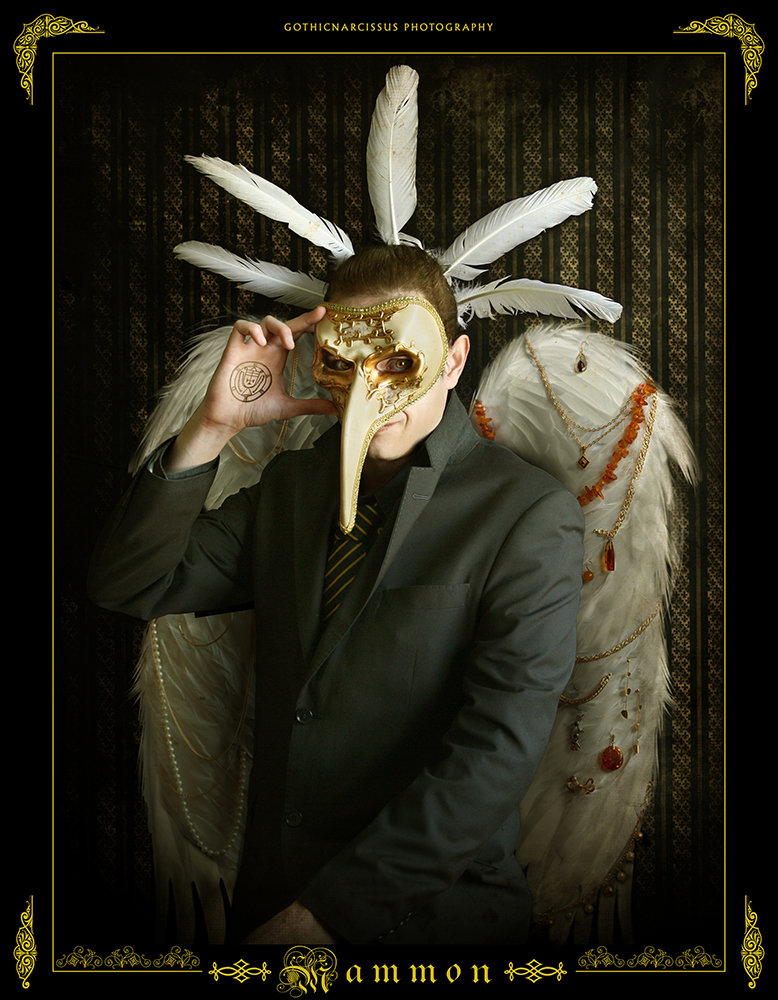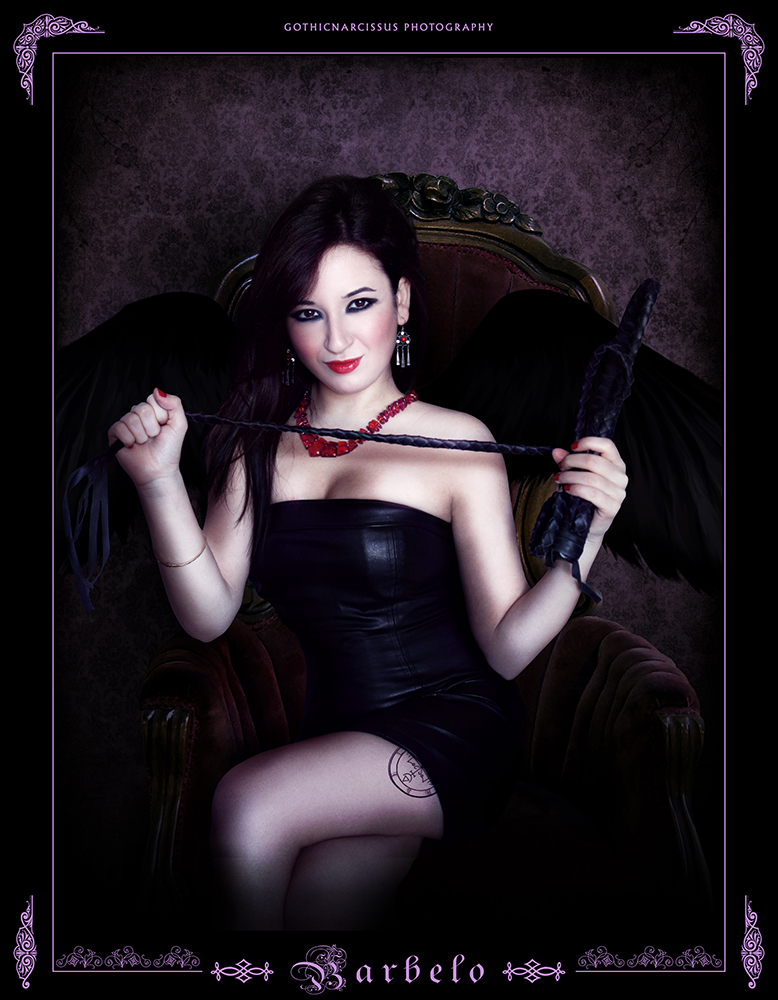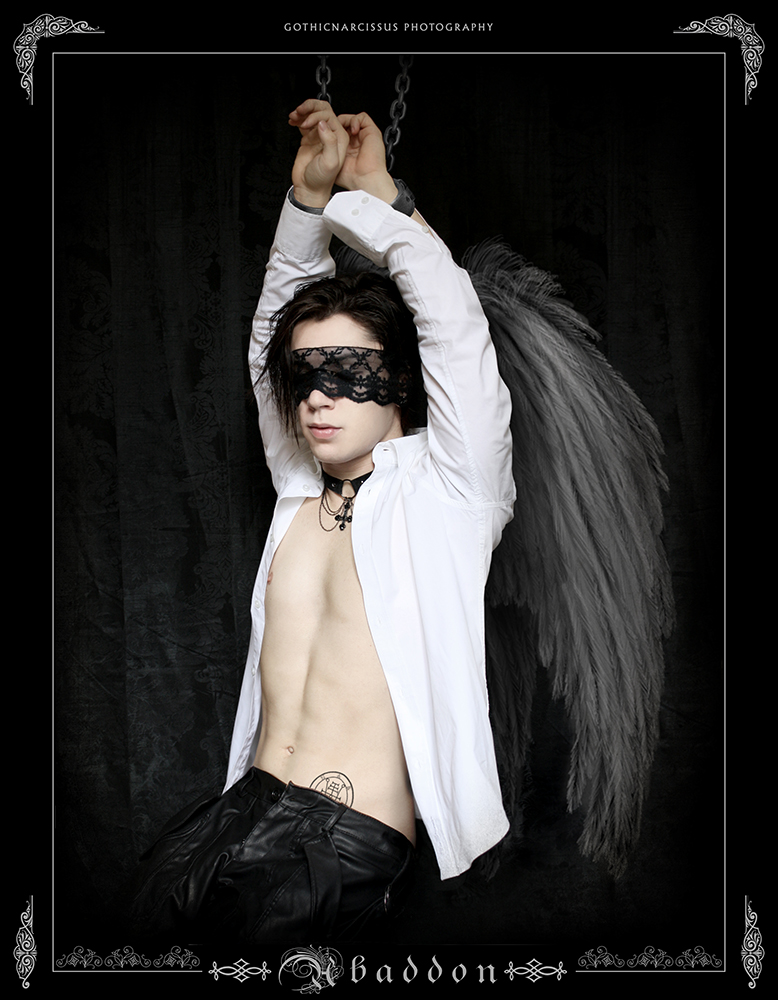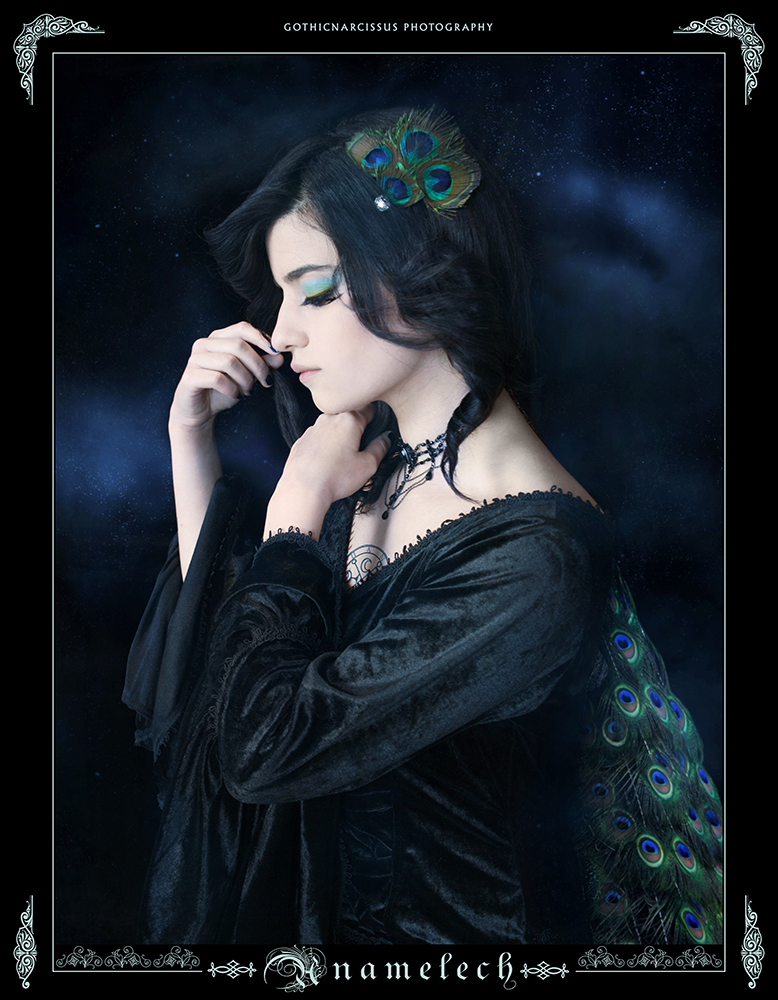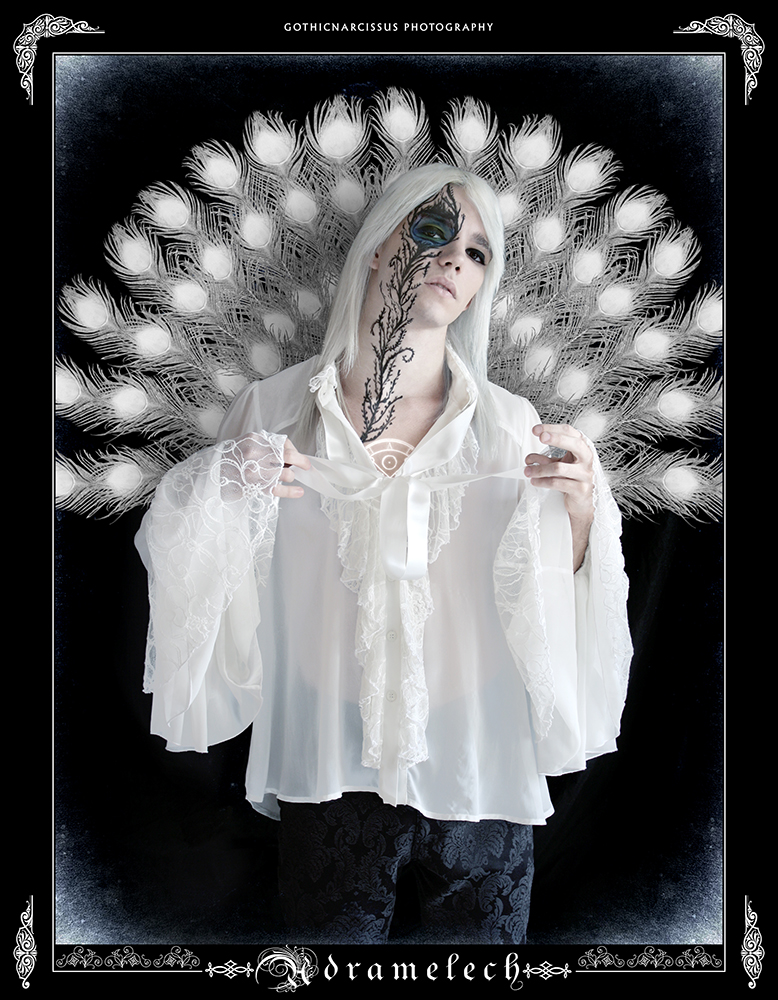Credits:
Photo, concept, manipulation, styling, make up, frame design:
GothicNarcissus
Model, hair:
Arrigo Bettella
Additional resources:
Amptone-stock (textures),
Evilneil (wings),
Sxc.hu (skull)
If you haven’t ever heard the name of
Beelzebub, raise your hand. Great, I see no hands up (?), and it’s no wonder: among all the Demons, Beelzebub is surely one of the most widely known, to the point that his name is popularly used to call the Devil himself, and even many scholar interpretations identify him as Satan. Like most of the Upper Demons, he’s derived from a Semitic deity, Baal, through his epithet Baal Zebul, “High Lord”, mocked in the Hebrew translation as Baal Zebub, “Lord of the flies”. And indeed he is one, as he’s even portrayed in the shape of a huge fly with skull-marked wings, most notably in Colin de Plancy’s
Dictionnaire Infernal. It is interesting to note that there is a Demon called Baal as well, but while the
Dictionnaire Infernal lists them in two different entries, most scholars agree that they’re basically the same entity with alternate names: beside the name, they share many attributes, including being listed as one of the seven kings of Hell and the identification with the Devil.
Peter Binsfeld places Beelzebub as the Demon of Gluttony (which, again, is fitting for a fly), and pretty much all the sources agree in saying that he’s located very high in the infernal hierarchy. Some say that he’s related to element Earth, while there is some disagreement whether he was a Seraph or a Cherub.
 |
| Beelzebub from the Dictionnaire Infernal. |
Being so infamous, Beelzebub was also mentioned in Kaori Yuky’s
Angel Sanctuary, even making a minor cameo in a single scene beside being briefly described in the side notes. She designed him as a fly (even creepier than the
Dictionnaire Infernal depiction) but didn’t characterise him further than the official description because he was very difficult to draw. Nevertheless, his appearance definitely convinced me I would include Beelzebub rather than Baal, and that he would be my Demon of Gluttony too.
Due to his fame and his appearance on the manga, I started thinking of how to portray Beelzebub very early, right after starting the project. Similarly to Mammon, as neither Kaori Yuki’s nor his official depiction fit my vision, I had to come up myself with his graphical rendition that would stay true to his nature. In his case, my task was simpler: fly wings would be enough to recall the original motif. As you can see in the sketch below (this time done on my anthropology notebook), I originally considered also a furry collar to strengthen this connection, but I eventually scrapped the idea as it was too garrish. This first sketch, however, lacked a connection with Beelzebub’s sin, so I decided to add a fruit to symbolise it: fruits are served at the end of a meal to sweeten it, thus might be considered an “optional” and fit to the idea of Gluttony.
 |
| My almost decently drawn Beelzebub sketch. |
The problem now was choosing one. Grape was downright scrapped, as it was the most clichéd thing I could possibly think of; apple followed for the same reason, and because there would be a Demon more closely connected to it; I couldn’t find any fruit specifically connected to the sin or idea of Gluttony so, after some further researches, I came up with the idea of pomegranate. Pomegranate has very strong symbolic connotations in many religions, beginning with Greeks, when it’s connected to the myth of Persephone and the Underworld, up to Hebrews and Christians: in the Judaic tradition, it’s a symbol of sanctity, honesty and rectitude, as it was believed that it contained 613 seeds (as many as the commandments in the Torah), while for Christians it represents fruitful martyrdom and holiness. What could be possibly better (and more blasphemous) than Beelzebub crushing a bleeding pomegranate in spite of God? And here it was.
I considered a couple of models for the role, but was not entirely convinced until I found Arrigo (on Facebook, for a change): I wanted Beelzebub to be more manly than the other Demons so far and he just caught my attention. We originally intended to shoot in November/December 2010, but things ended up being done last week. As the outfit, we opted for something elegant but sober, as in my view Beelzebub is not as wanton as most of the other Demons. Despite his infamousness, Beelzebub is not included in the
Lesser Key Of Solomon: thus, and also considering the ethimologic study I mentioned above, I chose the seal of Baal, which indeed shaped as a fly or insect.
An important detail I was adamant about including were the skulls on his wings, as they are a fundamental trait of Beelzebub’s character. First of all, ancient Hebrews believed flies were born from corpses (the two words themselves share their root); secondly, Beelebub was regarded as a military leader of one of the strongest and darkest armies of Hell, which he raised directly from the dead like flies, and was therefore known as “The Lord of Chaos” and “Master of Calumny”; thirdly, in Christian mythology, during apocalypse he is said to be clouding the sky with his army of soul-stealing flies. He’s therefore well connected with the dead and Death in general (that’s why I associated him with the astral powers of Pluto, beside the latter being a chthonian force linked to Element Earth), and the skulls are his very emblem, even more in character than his Seal. They just
have to be there.
Orange is often associated with Gluttony, hence it’s the theme-colour of the work. The theme-song is
Swarm, an unreleased demo by
Tactile Gemma: it’s about flies and also a bit about Gluttony, the best choice.
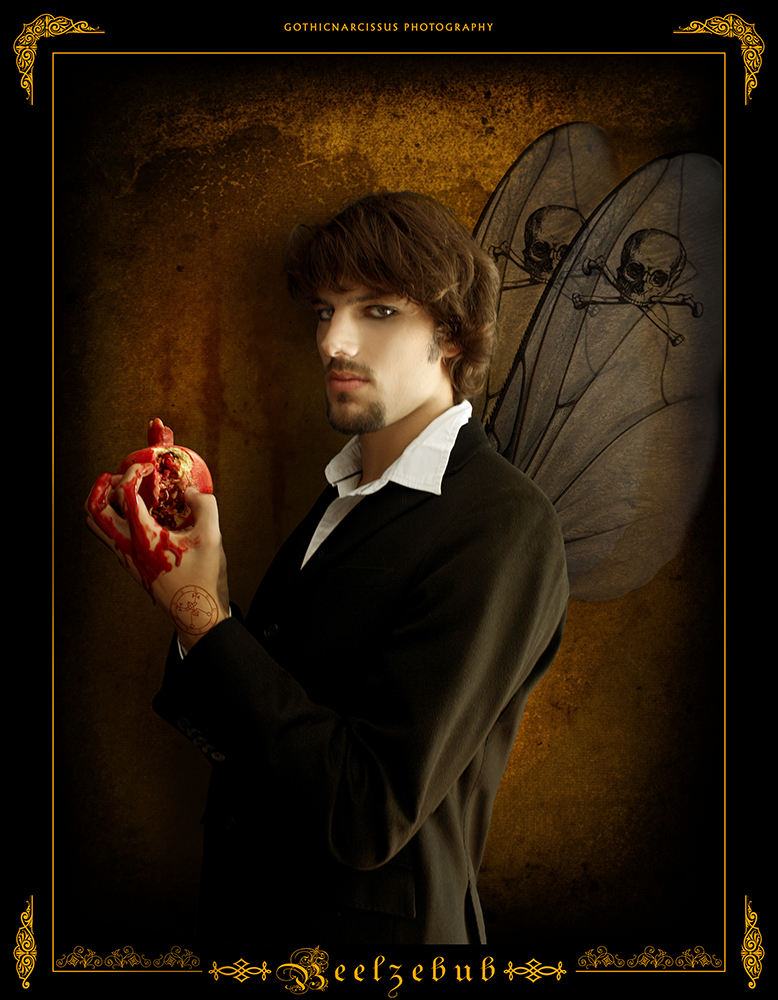 Archduke Beelzebub is one of the highest-ranking Demons of Hell and undoubtedly one of the most fearful. He is the Demon of Gluttony, thus one of the Seven Satans as the Lord of Flies, as well as an Elemental and Astral Demon. Formerly the Second-in-Command of Seraphim under Duchess Astarte’s leadership, after his Fall he retained his mastership of Element Earth in all of its forms, and that of the astrological influence of Planet Pluto. He’s the Leader of the Order of the Great Fly, an honorary order which includes most of the Upper Demons whose elemental powers rely on Earth, as well as other important Courtiers: Marquis Adramelech, Prince Abaddon, Duke Azazel, Marquis Nergal, Duke Xaphan, Marquise Decarabia, Countess Jezebeth and, secretly, Prince Absinthion.
Archduke Beelzebub is one of the highest-ranking Demons of Hell and undoubtedly one of the most fearful. He is the Demon of Gluttony, thus one of the Seven Satans as the Lord of Flies, as well as an Elemental and Astral Demon. Formerly the Second-in-Command of Seraphim under Duchess Astarte’s leadership, after his Fall he retained his mastership of Element Earth in all of its forms, and that of the astrological influence of Planet Pluto. He’s the Leader of the Order of the Great Fly, an honorary order which includes most of the Upper Demons whose elemental powers rely on Earth, as well as other important Courtiers: Marquis Adramelech, Prince Abaddon, Duke Azazel, Marquis Nergal, Duke Xaphan, Marquise Decarabia, Countess Jezebeth and, secretly, Prince Absinthion.



